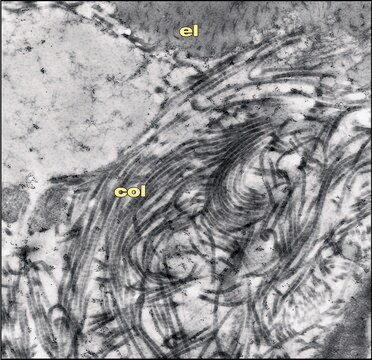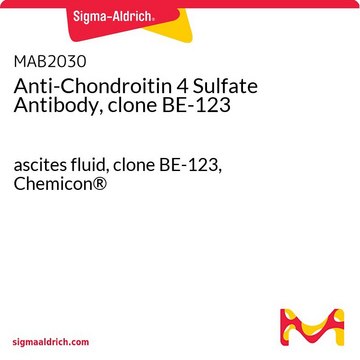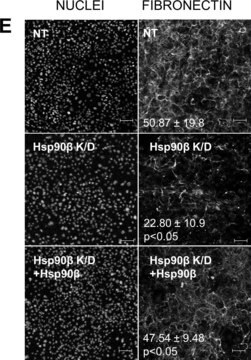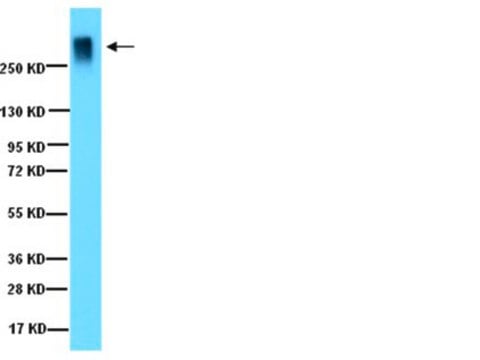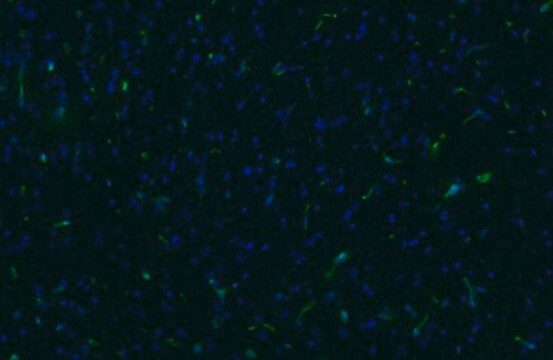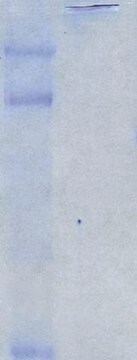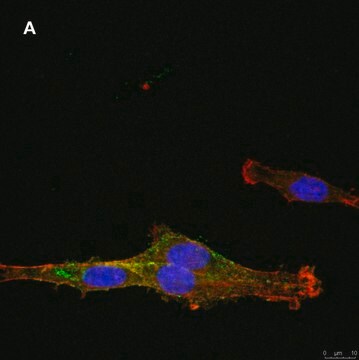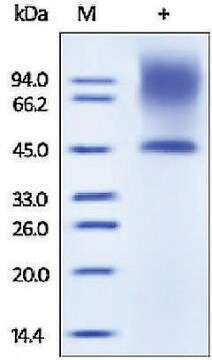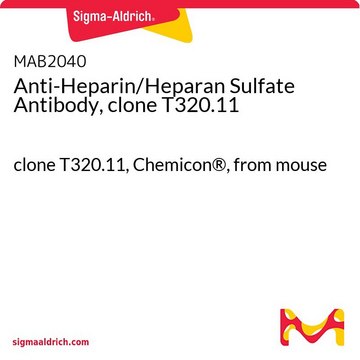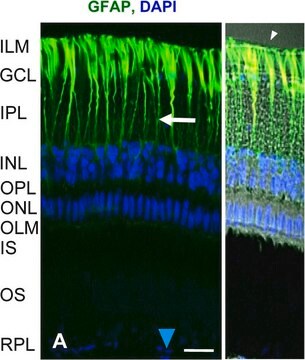Kluczowe dokumenty
SAB4200696
Anti-Chondroitin Sulfate antibody, Mouse monoclonal
clone CS-56, purified from hybridoma cell culture
Synonim(y):
CSPG, chondroitin sulfate proteoglycan
About This Item
Polecane produkty
pochodzenie biologiczne
mouse
Poziom jakości
forma przeciwciała
purified from hybridoma cell culture
purified immunoglobulin
rodzaj przeciwciała
primary antibodies
klon
CS-56, monoclonal
Formularz
buffered aqueous solution
reaktywność gatunkowa
mouse, chicken, bovine, human
opakowanie
antibody small pack of 25 μL
stężenie
~1 mg/mL
metody
immunofluorescence: 2.5-5 μg/mL using bovine BMGE cells
immunohistochemistry: 2.5-5 μg/mL using heat-retrieved formalin-fixed, paraffin-embedded human colon cancer sections and Biotin/ExtrAvidin ®-Peroxidase staining system.
izotyp
IgM
Warunki transportu
dry ice
temp. przechowywania
−20°C
docelowa modyfikacja potranslacyjna
unmodified
informacje o genach
human ... CSPG4(1464)
Powiązane kategorie
Opis ogólny
Chondroitin sulfate proteoglycan 4 (CSPG4) or nerve/glial antigen 2 (NG2) is encoded by the gene mapped to human chromosome 15q24.2-15q24.3. It is a growth-inhibitory chondroitin sulfate proteoglycan (CSPG) produced after spinal cord injury. It has a single glycosaminoglycan (GAG) chain. The protein belongs to the transmembrane chondroitin sulfate proteoglycans family.
Immunogen
Działania biochem./fizjol.
Postać fizyczna
Przechowywanie i stabilność
Inne uwagi
Informacje prawne
Oświadczenie o zrzeczeniu się odpowiedzialności
Nie możesz znaleźć właściwego produktu?
Wypróbuj nasz Narzędzie selektora produktów.
Kod klasy składowania
12 - Non Combustible Liquids
Klasa zagrożenia wodnego (WGK)
WGK 1
Temperatura zapłonu (°F)
Not applicable
Temperatura zapłonu (°C)
Not applicable
Wybierz jedną z najnowszych wersji:
Certyfikaty analizy (CoA)
Nie widzisz odpowiedniej wersji?
Jeśli potrzebujesz konkretnej wersji, możesz wyszukać konkretny certyfikat według numeru partii lub serii.
Masz już ten produkt?
Dokumenty związane z niedawno zakupionymi produktami zostały zamieszczone w Bibliotece dokumentów.
Klienci oglądali również te produkty
Therapeutic Target in Malignant Cancer
Nasz zespół naukowców ma doświadczenie we wszystkich obszarach badań, w tym w naukach przyrodniczych, materiałoznawstwie, syntezie chemicznej, chromatografii, analityce i wielu innych dziedzinach.
Skontaktuj się z zespołem ds. pomocy technicznej